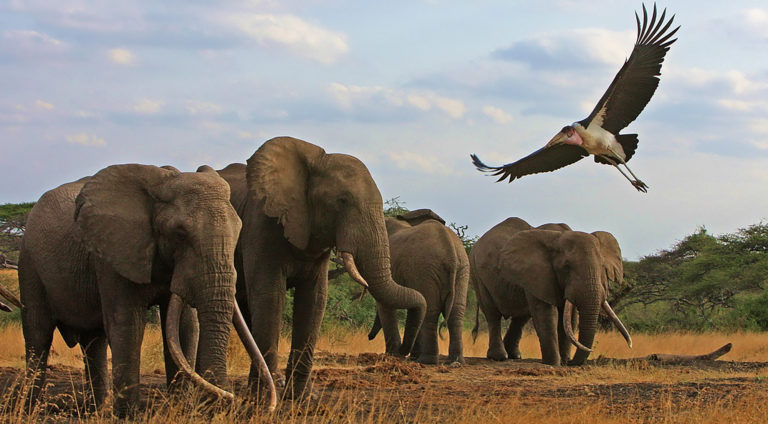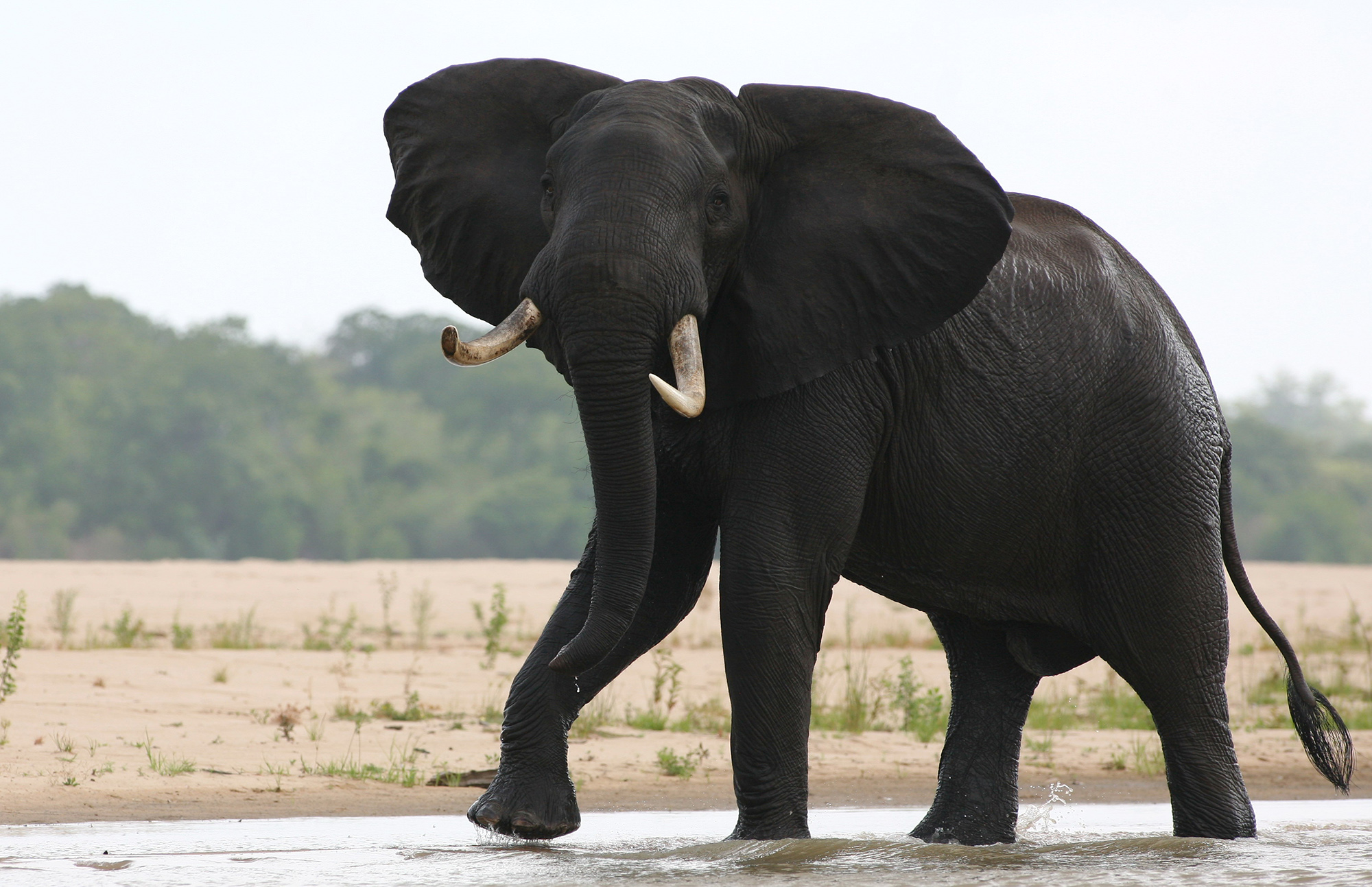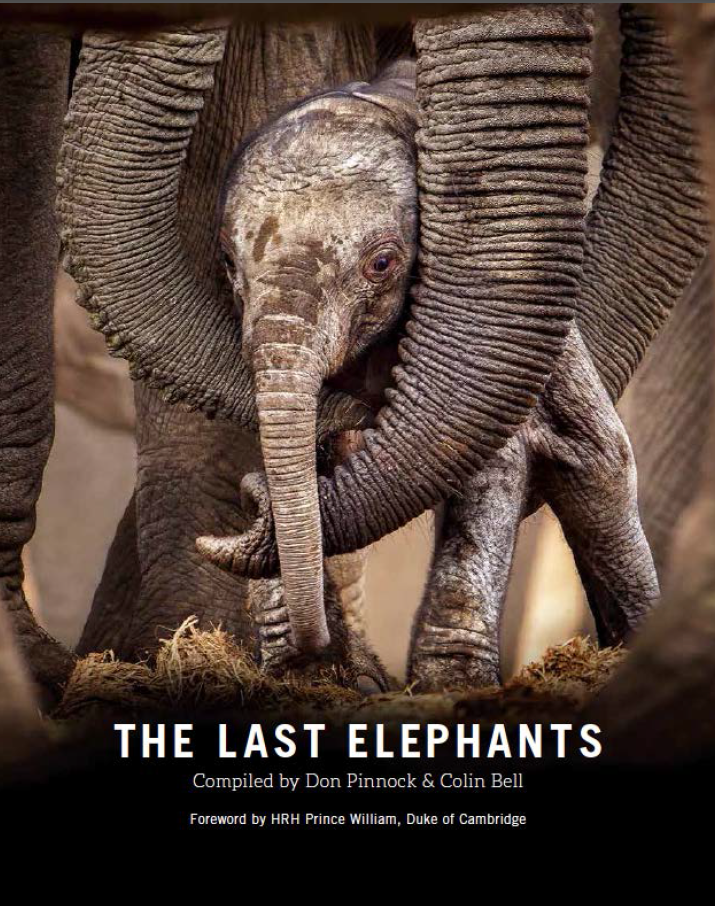
World Elephant Day: How are the Pachyderms Doing in Africa?
The title of the book I compiled with Colin Bell, ‘The Last Elephants’, was less predictive than a warning — elephants on the continent were in big trouble, with populations plummeting. Two years later it was time to see how they were doing… writes DON PINNOCK, DAILY MAVERICK. The state of elephants in Africa is in […]

The title of the book I compiled with Colin Bell, ‘The Last Elephants’, was less predictive than a warning — elephants on the continent were in big trouble, with populations plummeting. Two years later it was time to see how they were doing… writes DON PINNOCK, DAILY MAVERICK.
The state of elephants in Africa is in some measure good and in large measure bad. In a number of cases it’s downright ugly. Savannah elephants have recently been listed as endangered and forest elephants as critically endangered, so their future is a concern.
So how are they doing? Here’s the backdrop: From roughly a million in 1970, Africa’s elephant population plummeted to around 450,000 at last count — a decline largely blamed on poaching for their ivory. At its height in 2011, poaching claimed 36,000 elephants a year, or an average of one every 15 minutes.
And looming like an approaching thunderstorm is the number of people living in Africa, which has doubled since 1982, reaching a billion in 2009, and expected to double again by 2050. Increasing conflict with elephants will be inevitable.
The “good” today is in South Africa and Kenya as well as, surprisingly, Mali and Chad. The “bad” is almost everywhere else and, sadly, includes the country with the greatest herd: Botswana. The ugly is where it always seems to be for elephants: Zimbabwe.
Here’s the good news for elephants…
At the moment elephant numbers in southern Africa seem to be relatively stable. In South Africa there are around 26,000 and in northern Botswana the population has remained at around 130,000 for more than a decade. In Kenya, according to conservationist Karl Ammann, elephant numbers are gradually increasing — but so is conflict with farmers.
In June, South African Environment Minister Barbara Creecy tabled a policy saying the government would not support the international sale of ivory at CITES “as long as current specified circumstances prevail”. It’s draft policy and not yet law, but is encouraging.
Chad’s elephants continue to thrive thanks to the pioneering work done by African Parks Network operating in tandem with the government of Chad in Zakouma National Park. Kenya, too, has made great progress to reduce elephant poaching by close to 90% over the past decade through better law enforcement, ensuring that elephants are positioned as an asset both for the country and for their people.
Another “good” is Mali, a place so often in turmoil it’s a surprise. The country has just experienced its second coup in nine months. Northern Mali is the transit route for huge numbers of migrants making their way northward to Europe and a major conduit for illegal drugs, weapons and jihadists.
Amid this, the Mali Elephant Project, engaging with local communities to protect desert-adapted elephants, is remarkably successful. There has been almost zero poaching and the government has approved a large extension to the Gourma Elephant Reserve. For nine years, MEP staff have been operating in a country slipping in and out of chaos and keeping elephants safe through it all. They’re hardy protectors.
Here’s the bad news for elephants…
Perhaps anticipating SA’s CITES pullback, tourism ministers from Zimbabwe, Namibia, Zambia and Botswana met in June and, according to reports, discussed pulling out of CITES and possibly establishing an agreement similar to the Kimberley Process for diamonds, which requires transparency only between partners.

Would it work for elephants? Given that a UN organisation like CITES can’t stop abuses of wildlife, it’s hard to imagine how a small side organisation could do any better. But it signals a strong desire to sell ivory and export elephants into captivity in defiance of CITES bans.
Zimbabwe, in terms of elephant conservation, is seldom good news. Transparency International rates it among the top 12 most corrupt countries in Africa and wildlife is a way to make money for those in power (and nobody else). China appears to be a ready customer.
In 2018 information leaked that elephant herds in Hwange National Park were being panicked by helicopters and trucks. Youngsters left behind were captured, penned at the park and sold to China. Then in 2019 CITES slammed the door on live elephant exports, which explains Zimbabwe’s keenness to pull out of the organisation.
In May, Environment Minister Mangaliso Ndlovu said in an interview on Zimpapers Television Network that culling was on the table. There’s a history. Between 1965 and 1988, Zimbabwe killed more than 50,000 elephants in five culling events. The standard reasons now are “too many elephants” and human-elephant conflict. Zimbabwe has an estimated population of 82,000 elephants. A 2016 census found the population down by 6% overall, but massively down in some regions like Sebungwe.
The export of elephants seems to also be on the cards. The conservation NGO Advocates4Earth applied for an interdict last month to prevent the export they said was imminent. Zimbabwe Wildlife Authority spokesperson Tinashe Farawo denied it was planning to export elephants. However, Zimbabwe has a record of exporting baby elephants in the face of international opprobrium.
Elephant specialist Sharon Pincott, who worked in Hwange for many years, said the culling announcement was probably a ploy. “There were articles saying they were considering culling. Next they were going to increase sport-hunting quotas… ZimParks just putting it out there. That was probably so we would all now say ‘well, maybe capturing a few youngsters isn’t so bad’. That’s how they think. And every single time they’ve lied and denied that they’re capturing.”
In Tanzania, the Selous Game Reserve is no more. What was the greatest wilderness in Africa in terms of size has been carved up to make way for mines, communities, a giant logging operation and a new hydro-electric dam that is currently being built at Stiegler’s Gorge in the very heart of the boundaries of the old reserve.
There are no recent population counts to check elephant numbers in Tanzania’s two new smaller parks, though it cannot be good since poaching remains high.
Botswana, once the darling of wildlife conservation, is using human-animal conflict and “overpopulation” to justify overturning its moratorium on trophy hunting. It’s an argument that’s been rubbished by conservationists. With 30% of all remaining African savannah elephants being in Botswana, the future of elephants in Africa depends on what happens there.
For 2021, a hunting quota of 287 elephants has been set, divided between foreigners and local citizens (who sometimes sell to foreigners). The real problems are twofold: unsustainable quotas plus increasing human population and development in wildlife ranges.
When hunting starts, elephants move and this can lead to conflict with villagers and farmers. Dr Mike Chase of Elephants Without Borders (EWB) says trophy hunting doesn’t solve human-animal conflict.
“Hunters seek our trophy-quality elephant bulls carrying tusks that weigh about 60lbs a side. They enter this tusk size at about 40 years old. In Botswana, these older bulls are unlikely to be those responsible for crop-raiding. Trophy hunters are unlikely to pay a large sum of money to hunt a younger ‘problem’ elephant with small tusks.”
Shooting 287 elephants a year may sound like a blip out of a total population of 130,000, but there’s a real concern that it will reduce big tuskers in concessions that have quotas as high as 12 elephants to hunt each year.
“Old bulls suppress problem behaviour in young bulls,” says Chase, “so diminishing their numbers through unsustainable hunting quotas could increase the elephant problem for farmers. EWB works directly with farmers, which has resulted in positive results for both elephants and people.”
Dr Audrey Delsink of Humane Society International-Africa agrees. “Targeting older elephants is extremely detrimental to the population because both sexes provide critically important ecological and social knowledge. They aid in the survival of the entire group. Only 39% of males survive to the age of first musth, so excessive hunting of bulls has severe consequences for the demographics of a bull population.”
Is hunting good for conservation? According to conservationist Pieter Kat, very little revenue from hunts gets back to communities. “No hunting operator in Botswana discloses their profits,” he says, “and none state clearly how their trophy hunting benefits the conservation of the species.”
Another problem has been the insufficiently and unscientifically explained die-off of hundreds of elephants near Seronga — the largest ever reported anywhere.
In Namibia, there’s an argument about elephant numbers. In a recent aerial transect survey, Namibia’s Ministry of Environment, Forestry and Tourism estimated Namibia’s elephant population at between 16,000 and 24,000 and says numbers are increasing.
Veteran environmental journalist John Grobler, who regularly travels through the areas surveyed, disagrees. “Elephant counts are always done by the same, small, NGO-funded group. Their methodology and the results are so far removed from reality they could be talking about a different country.
“To have increased by 9,000 elephants between 1995 and 2004 would require a growth rate of 9.9% — three times the claimed average growth rate. Were some elephant cows having twins or what? Are they counting ghost herds? The official figure is so improbable as to be impossible. There are likely no more than 6,000 elephants left in Namibia — if we’re lucky.” So who’s correct?
In Central Africa, forest elephants are fighting for survival because their tusks are harder and in high demand. According to Lee White, Gabon’s Minister of Forests, Oceans, Environment and Climate Change, from 2006, when poachers began targeting this separate species, Africa’s rainforest states lost 75% of all forest elephants in the following 15 years — more than 95% of those in Democratic Republic of the Congo and 90% in Cameroon. Gabon lost 25,000 elephants to transnational organised crime.
What’s to be done?
Overall, elephants in Africa are caught in an ever-tightening triangle of tribulation: poaching, trophy hunting and habitat loss, all of it caused by human encroachment and greed in rangelands they have traversed peacefully for millions of years.
While human penetration into wildlife ranges is generally pictured as farmers and fields, possibly greater habitat danger comes from commercial land grabs. An example is the vast oil prospecting projectby a Canadian company, ReconAfrica, in the Kavango Basin close to the home range of the world’s greatest concentration of elephants. The company says it aims “to develop an area roughly the size of Belgium into an oil field”.
“While the world slowly but surely turns away from fossil fuels in a bid to address climate change,” said Rachel Mackenna of the Environmental Investigation Agency (EIA), “ReconAfrica’s pushing for oil and gas — and possibly fracking — in one of the world’s last remaining wilderness areas. It’s a disturbing illustration of how unsustainable extractive projects can undermine the survival of an entire ecosystem.”

ReconAfrica’s plans for the Kavango Basin have the full support of Namibian President Hage Geingob. On 10 August he met with Craig Steinke, co-founder of Renaissance Oil Corporation, ReconAfrica’s parent company, at State House in Windhoek. Geingob said the project would bring much-needed jobs to the region.
Meanwhile, EIA is concerned that if Botswana grants permits to ReconAfrica, the country’s rising levels of poaching will be further exacerbated by the opening of wilderness areas to human industrial activity.
Other “land grabs” besides the vast Stiegler’s Gorge hydropower dam projectmentioned earlier are China’s financing of four large dams on the Donga River in Nigeria, threatening the already highly endangered forest biomes and nearby reserves. It’s also funding the construction of a dam on Angola’s Cuanza River, which could destroy the species-rich floodplain and threaten water supply in two national parks.
“We could be losing elephants in the wild,” warns Dr Marion Garai of the Elephant Reintegration Trust. Research has shown that high volume, invasive tourism creates chronic stress in elephants, with higher cortisol levels, which can weaken the immune system.
“Our wind turbines, oil drilling and other underground or underwater technology are having a negative effect on the communication system of animals that ‘talk’ through seismic waves, such as elephants. Translocations, fences and other management interventions are creating social disruptions and severing ties of larger social networks.
“There are several predictions that estimate elephants and other large mammals will go extinct in the wild within the next 30-50 years if the situation is not abated. Human-wildlife conflicts are the greatest threat to their survival.”
Dr Delsink is equally concerned: “Elephants are one of the top three species killed as an assumed ‘problem animal’. All too often they’re destroyed as the first line of defence, which doesn’t sort the root of the problem. If strategies fail, we think it is a ‘problem elephant’, when it’s normally a problem of bad planning. We need to focus on co-existence rather than conflict and we need innovative, practical and cost-effective solutions.
“With 76% of elephant populations spread across one or more national borders, management actions taken at the incorrect scale can have massive consequences and ripple effects that extend far beyond the targeted zone, area or population. So country-level management choices could have devastating consequences for transient elephants.”
For Dr Michelle Henley of Elephants Alive, it’s worth asking the elephants: “We’ve discovered that pathfinding bulls are forging vital corridors through human-dominated landscapes from the Kruger National Park towards the Futi corridor in Mozambique.
“Allowing elephants to highlight migration routes provides an outlet for local high densities which in turn maintains the biodiversity objectives of protected areas and ensures genetic diversity across the wider elephant population. We should follow their lead.”
One of the great hopes for the survival of elephants in the long term is the KAZA project, a joint five-country initiative that is mandated to open up viable and practical elephant corridors. This would allow some of Botswana’s elephant herds to migrate unhindered northwards into the vast open spaces of southern Angola and Zambia where food is in abundance.
Sadly, KAZA seems to be merely another great initiative on paper that creates wonderful maps and Powerpoint presentations with little real action on the ground. But we can hope.
So to wrap up: in most places elephants are worse off now than two years ago, despite some population increases. Conflict is not the result of too many of them encroaching on human land, but rather humans increasingly invading theirs. Humans are voracious land-grabbers. Around 62% of the African continent is elephant habitat, but they are able to use only 17% of it.
“How much longer can elephants withstand the impact of our burgeoning human species?” asks Garai. The answer may be — unless there’s coordinated commitment across Africa’s range states — not for too long. DM/OBP
This article is a free to republish article from Conservation Action, and first appeared on the Daily Maverick here.
